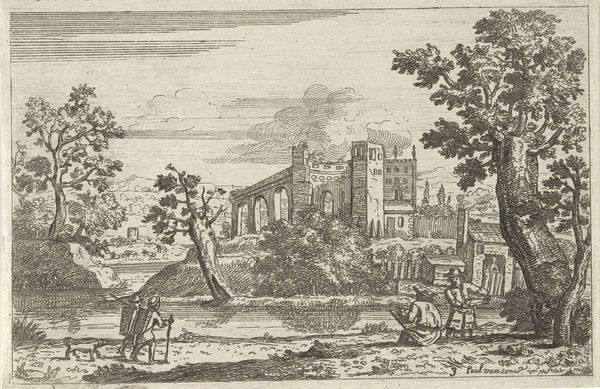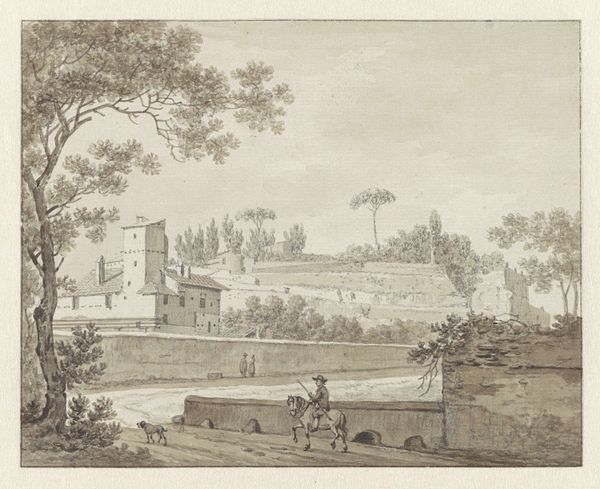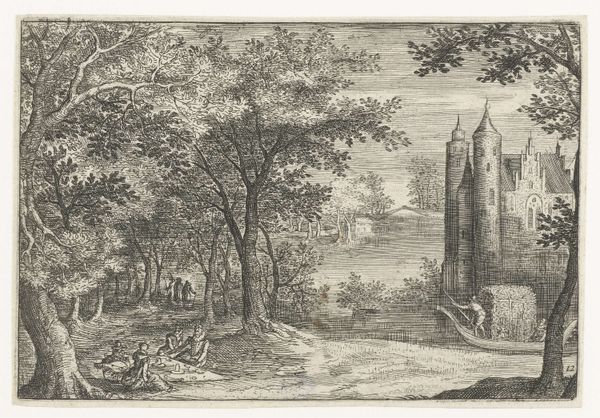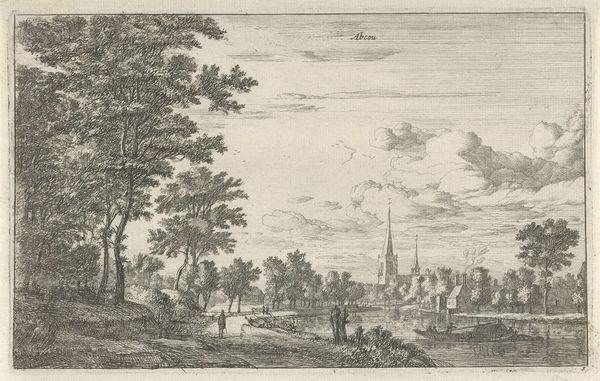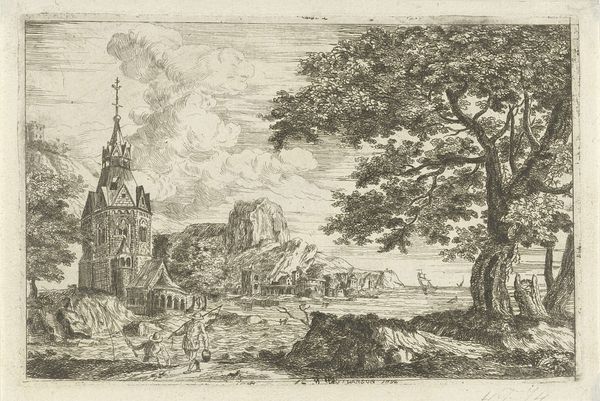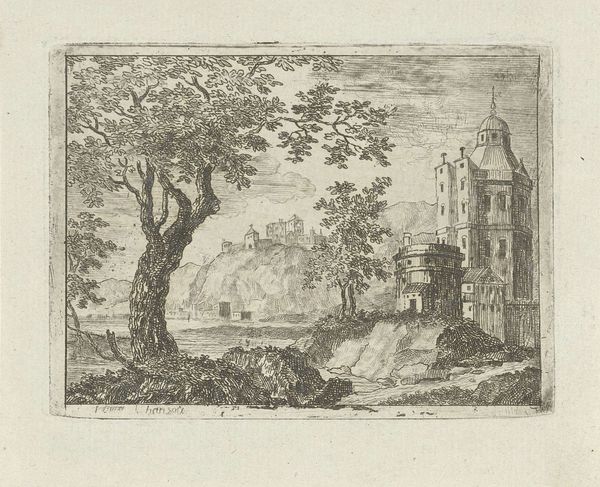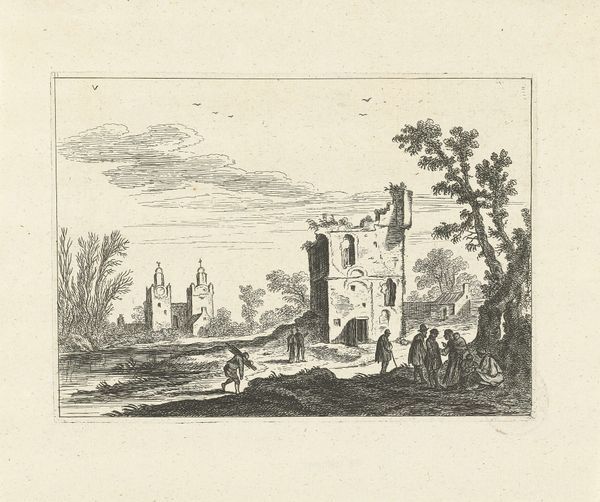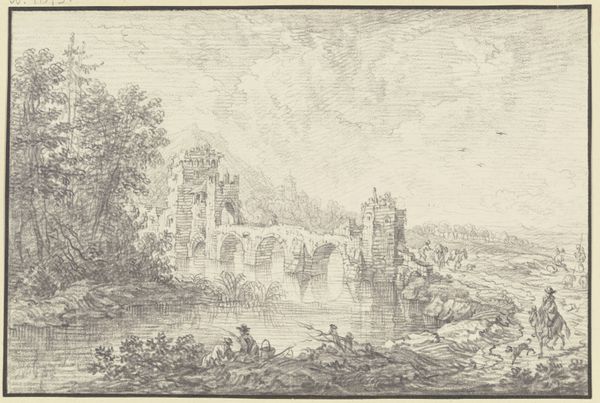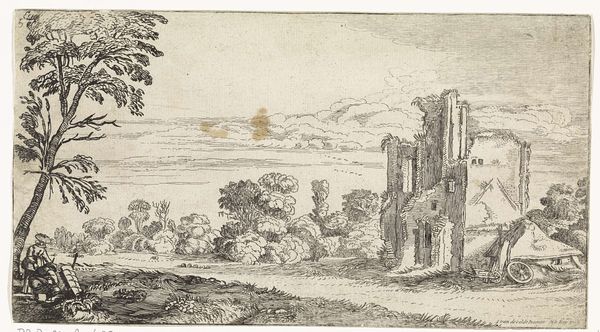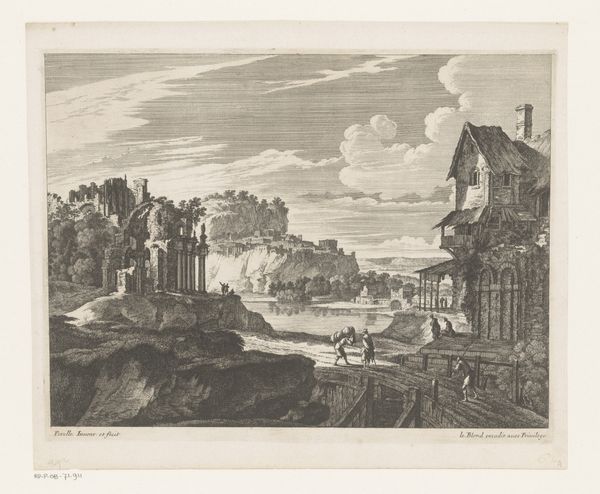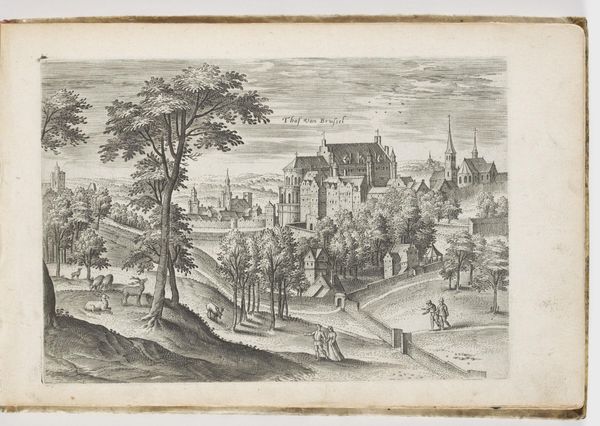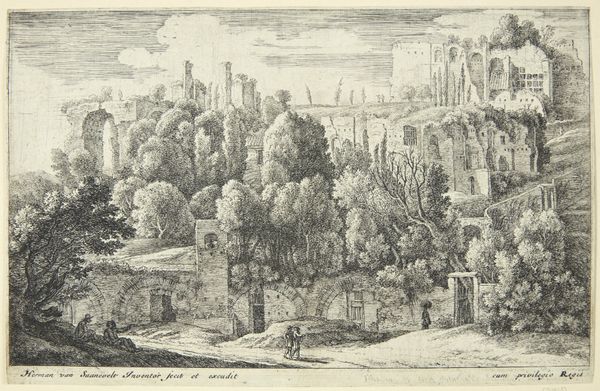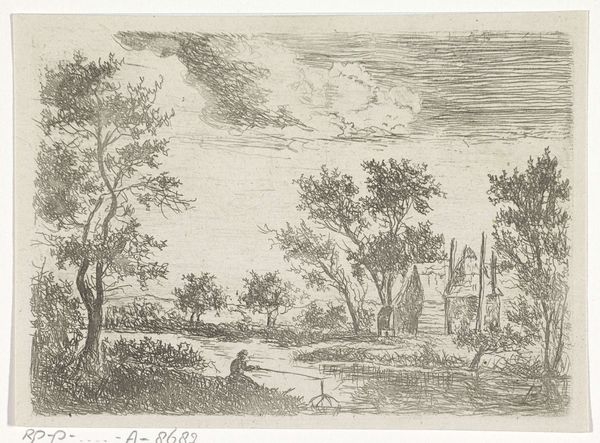
drawing, paper, ink
#
drawing
#
baroque
#
landscape
#
paper
#
ink
#
pen-ink sketch
#
cityscape
#
italian-renaissance
Dimensions: height 193 mm, width 219 mm
Copyright: Rijks Museum: Open Domain
Editor: So, this is "Italiaans gezicht met ruïne," an ink drawing on paper by Hendrik Carré II, dating somewhere between 1706 and 1775. There's a sort of melancholic grandeur about it, you know? The ruins contrasted with the everyday people… What do you make of this piece? Curator: Looking at Carré's "Italiaans gezicht met ruïne," I’m immediately drawn to the process. Consider the availability and quality of paper and ink in the 18th century – these materials weren’t universally accessible. Who commissioned or purchased this drawing and why? Was it preparatory for a larger work, or a commodity sold to tourists eager for souvenirs of their Grand Tour? The ruin itself tells a story of labor, doesn't it? Editor: I see your point about the economic aspects of artmaking during that era. So the existence of this artwork speaks to a network of material availability and consumption. It makes me wonder about those ruins. Curator: Exactly. The ruin, likely a Roman structure, isn’t just a picturesque motif. It’s a vestige of a powerful empire, a monument to labor, extraction, and exploitation, now repurposed as scenery. How does Carré’s depiction of the figures in the landscape—the everyday people, as you say—relate to the fallen monument and to those earlier labors? Editor: They’re sort of… disconnected. There's no real engagement. Curator: Precisely. They exist within the shadow of this ruined past, perhaps unaware of or indifferent to the labor that built the structures they now occupy as background. Do you see how the drawing, the ink, the paper, all become evidence in a larger social and economic narrative? Editor: I do. So, beyond its aesthetic qualities, the artwork acts as a marker of material conditions and even hints at broader societal structures involving production and labor of ancient times, as well as its time. Thank you, it adds many layers! Curator: Exactly! Considering art through the lens of its production and material reality opens up compelling new avenues of understanding.
Comments
No comments
Be the first to comment and join the conversation on the ultimate creative platform.
